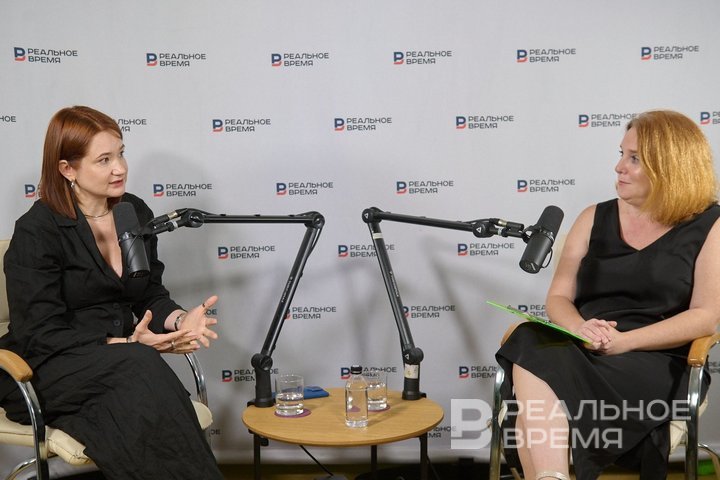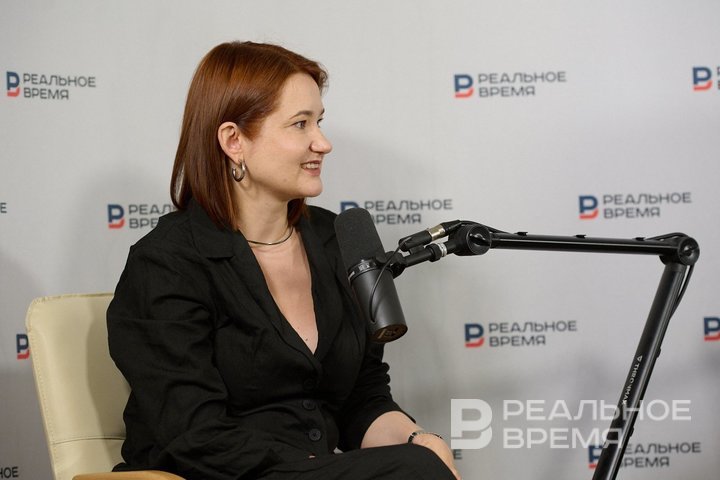Elena Stryukova: ‘Investors’ expectations to recoup investment in street retail in 7-9 years are far in the past’
A commercial real estate expert — about investing in street retail and how to choose a suitable investment space

Street retail in Kazan and the surrounding area is becoming more expensive: there are precedents for the sale of commercial space in top locations for 800 thousand rubles per square metre. Investment flows are being redirected from residential real estate to commerce one — apartments in new buildings have stopped growing rapidly in price. However, commercial real estate has greatly increased the payback horizon: no one expects 7-9 years, now it is normal for the market to focus on 15-17 years. Elena Stryukova, a market expert, the authorised representative of the RGUD (Russian Guild of Managers and Developers) in Tatarstan, managing partner of Perfect RED company, talked to Realnoe Vremya about what to pay attention to when choosing an object for investment in street retail, about trends in the commercial real estate market and why poor transport accessibility in new residential complexes can be a boon for an investor.
“It is not necessary to predict further growth in residential real estate prices”
How has the investment housing market in Tatarstan changed recently?
For the Russian market, investments in residential real estate have historically been the most understandable and affordable, they have always been popular. But now, indeed, due to the abolition of preferential mortgages, the investment housing market will seriously change. In fact, it has been transforming for several years now. The familiar story of buying an apartment at low construction and sale cycles at the time of commissioning has not been working for some time. And now, with the end of the universal preferential mortgage program, when only targeted benefits remain, it is not necessary to predict a further increase in residential real estate prices. It is becoming problematic to use housing to build up capital. But in order to save money, buying a home is still a reliable investment, but we will not see a rapid price increase on the near horizon.
If not apartments, then what one should invest in the real estate market now?
A wide range of types of commercial real estate can be considered. These are, for example, service apartments, which are now gaining momentum in Tatarstan. One such facility is under construction, the second is being prepared for launch, and there are up to seven more projects at the concept and design stage. It seems to us that this is an interesting segment and an alternative to investing in residential real estate for subsequent rental. In the case of service apartments, the owner does not have to independently solve the issues of finding tenants, cleaning, operation — all these processes are carried out by a professional management company. This format is popular in St. Petersburg and Moscow, but is still little known in Kazan. I think those who believe in it now will be able to make money on it.
We also see a high demand for commercial real estate as part of residential complexes — I'm talking about street retail.

The familiar story of buying an apartment at low construction and sale cycles at the time of commissioning has not been working for some time
“Commercial real estate in the Kazan agglomeration is liquid and in demand”
“Street retail can also be different — both by location and by organisation. If a person wants to invest, what criteria should he use to make a choice?
You have already outlined the key points in your question. The first one is definitely the location. I am now watching with interest the development of the commercial premises market as part of residential complexes and the formation of completely new trade corridors and gastro spaces. Take at least, for example, Stolbova Street.
When choosing a street retail facility for investment, I would pay attention to new residential complexes under construction with a high population density. After all, for a business that will be the end user of a premise, it is important how many people will live there and what are the characteristics of this target audience. While developing concepts of commercial real estate as part of residential complexes, it is interesting for us to observe the discussion in the development community on the topic: does the housing class determine the infrastructure of commercial facilities or does the planned commercial infrastructure itself help attract a certain number of buyers — future residents?
And which of these points are you leaning towards more?
Of course, when buying a home, people ask what kind of infrastructure will be included in the complex. It is also important when exactly it will be implemented — will they be able to use shops and restaurants immediately or will they have to wait until the residential complex is fully populated (this, in our experience, takes about two years). I think that the availability of infrastructure, and most importantly, understanding what it will be filled with, plays an important role in choosing an apartment complex when a person is thinking about buying an apartment. After all, when all commercial premises in one house are rented, for example, several pharmacies in a row, and there is nothing else here — this is a suboptimal situation. Everything has to be balanced. We need to work on this in detail, and first of all through the development of planning solutions for commerce.
I am sure that the quality of the concept of commercial premises in the residential complex can significantly affect sales from developers.
What else should they pay attention to?
Another important factor is competition. Even if we are talking about a residential complex remote from the city centre, the added value to a commercial space can be brought by that there is no competitive offer around. With a high probability, it will be rented at a high rate.
Commercial real estate in the agglomeration is liquid and in demand — it is designed to meet the needs of a large number of residents of these territories. It is no secret that the consumer today makes high demands on the place in which they will live. They want to have all the infrastructure within walking distance.
Look at the trends: take, for example, the concept of a fifteen-minute city. People want to spend less time on the road, while spending more and more time outside the house. Ten years ago, it seemed to us that breakfast was a home story. But today it is difficult to find a free table for breakfast in top establishments. Therefore, people buying an apartment, and even more so in a residential complex at some distance from the city centre, want to have catering, places for leisure and sports, and places for shopping and delivery of goods within walking distance.
So the option of street retail in locations far from the centre, where there will be a high population density, seems to me to be working and viable. Especially if there is nothing nearby that will attract the attention of potential tenants.

People buying an apartment, and even more so in a residential complex at some distance from the city centre, want to have catering, places for leisure and sports, and places for shopping and delivery of goods within walking distance
“We are seeing fewer and fewer sad stories when there is commerce premise, but it cannot be used”
From a technical point of view, what should one pay attention to when choosing a commercial space for investment? What are the current standards?
From this point of view, the market has stepped forward. We are seeing fewer and fewer sad stories when there is commerce, but it cannot be used.
If you are planning to buy commercial real estate for further rental, I would pay attention to several factors.
- It is important that the entrance is at the “zero mark” level and is not separated from the ground surface by steps (neither down nor up).
- Of course, the entrance group should be from the street side.
- It is desirable that there are several entrance groups: firstly, it can be useful for “cutting” premises, and secondly, if we are talking about retail, then the entrances for buyers and for loading should be separated.
- It is good if there is already a place for a signboard, and this is provided for in the concept of the residential complex and initially agreed upon.
- The higher the ceiling, the better.
- Storefronts and windows are always a very big plus.
- It is necessary that there are connection points for all communications. Be sure to take into account the power of the power supply points — it is necessary that different options are available. For example, if we want to open a catering or bakery, we will need points for connecting high-power appliances — we need to make sure that there is a sufficient number of kilowatts.

“In the near future, we will see an increase in prices for renting commercial space”
You say that the development of the concept of commercial premises in the residential complex may affect the sale of apartments by developers. But how can a developer influence who will rent these areas if they sell them?
There may be different approaches. I devoted some time to studying them: in connection with the entry of federal developers into the Kazan market, I wanted, first of all, to understand how they look at it. I know that local developers have gone from the idea of selling all the ground floors during the construction phase to the idea of keeping the premises in their ownership in order to manage their composition. Now we are increasingly seeing that developers leave commercial premises in their ownership and try to lease them to those market players who will add value to their residential complex. Some continue to own the premises for quite a long time after that. And some rent them out and immediately sell them as a ready-made rental business (which investors also have an interest in). All this allows them to somehow manage this volume of space.
There is also another approach on the market, when developers adhere to a different policy: “Our business is to build high-quality apartments, so we will sell commercial space in our residential complexes.” But even they are now thinking about selling them to large systemic investors who have experience in filling such facilities and will be able to provide sufficient, and most importantly, a diverse infrastructure for the residential complex that meets the needs of residents.
I think that the only way to truly manage the composition of infrastructure facilities in the residential complex is to keep these areas in your ownership.
Then it closes the possibilities of investing in these facilities.
There is one example in Tatarstan when a developer who has never sold his commercial premises finally put them up for sale. The motives for this decision are clear: after all, the pace of housing sales has fallen, we need to balance our economy somehow. At the same time, they carefully select buyers: specifies their type of activity. This is an example of an attempt to sell commercial premises only to their future end users. It is difficult to judge how successful it will be, but I like this approach. It seems to me that it is very correct.

I think that the only way to truly manage the composition of infrastructure facilities in the residential complex is to keep these areas in your ownership
What is the investment demand for commercial premises in the street retail format of proper quality? And how is the purchase and rental price of a square metre balanced?
The demand is crazy. I am aware of the facts when transactions are made with medium-sized premises (from 150 square metres) in top locations in Kazan with a price of 800 thousand rubles per square metre. On the one hand, of course, this indicates a high demand. On the other hand, I am confused about the payback period in this story: will the owner then be able to lease this room so that it pays off? Such a gap between the cost and current rental rates indicates an upward trend in the latter. As practice shows, when the price of commercial premises increases so rapidly, their rental rates are forced to catch up with it. I think in the near future we will see how the prices for renting commercial space in built-in premises will increase.
“Payback period of 15-17 years is estimated by investors as adequate to the market”
If we take the average price spread and do not take into account examples like the one you have just given? What is it today?
Top locations (within a 20-minute walk from the centre) can cost 500 thousand per square metre. Such a price is now perceived in the market quite normally. These will be facilities with a commissioning date in 2025-2026. Commercial premises in the Kazan agglomeration are sold at different prices, it is very difficult to “withdraw” the average cost — it all depends on competition and location. Somewhere you can still find premises for 160 thousand rubles per square metre. While somewhere, even in the agglomeration, the price will be close to 350-400 thousand.
Therefore, we need to look, look for opportunities and, most importantly, try to assess the potential based on who will live in these houses, how much this commerce will be in demand. But transport accessibility to the city, for example, will no longer be a key factor. Let me explain why: the higher the transport accessibility, the more likely it is that the population of a particular residential complex will travel to the center to meet their needs. But if such accessibility is not very high, there are chances that all leisure, recreation and, accordingly, money will settle here.
How has the profitability and payback period of commercial real estate, in particular street retail, changed today?
“Investors' expectations to recoup their invested money within 7-9 years — this story is far in the past, for all segments of real estate. The payback period for the premises of the segment we are currently talking about is estimated for a period of 15-17 years. Such a period is perceived by investors as adequate for the market. People are willing to invest for such time. But if we are talking about supertop locations and exclusive offers, the likes of which will no longer be in Kazan, then the payback period has already exceeded 20 years.